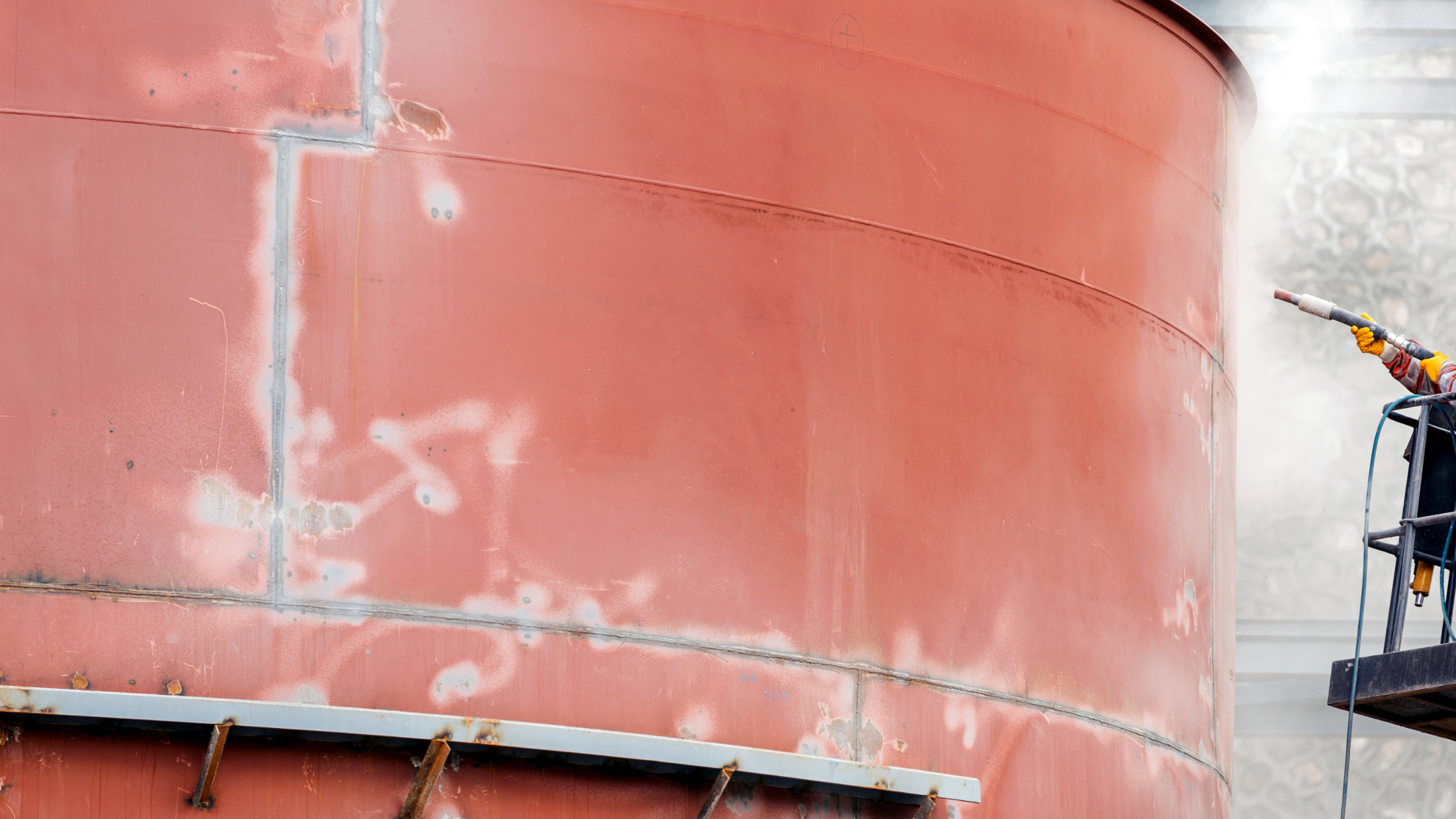 Whenever you are planning to update the coatings of any commercial business or industrial facility, preparing the affected substrates is crucial. Appropriate preparation of a substrate ensures that you can maximize adhesion of the new coating. That, in turn, helps deliver a full and even coat that resists environmental hazards.
Whenever you are planning to update the coatings of any commercial business or industrial facility, preparing the affected substrates is crucial. Appropriate preparation of a substrate ensures that you can maximize adhesion of the new coating. That, in turn, helps deliver a full and even coat that resists environmental hazards.
While many coatings have a primer layer that facilitates better adhesion, surface preparation should never be overlooked. Without surface preparation, you may get limited value from your coatings. Even if they have been applied correctly in all other ways, there is no guarantee they will perform as expected.
Abrasive blasting is one common method of surface preparation with a variety of applications.
In abrasive blasting, the painting contractor uses specialized tools to propel a controlled stream of abrasive media over the surface to be coated. In some cases, a Wheelabrator is used to cycle the media around the parts rather than propelling them in a direct stream over the surface.
Abrasive media is usually fairly inexpensive and much of it is reusable. This helps to make abrasive blasting a cost-effective approach to surface preparation. It is also efficient, taking a relatively short time to clean surfaces.
In the hands of a professional with modern OSHA workplace training, it is also very safe.
What Are the Different Types of Abrasive Blasting?
The precise results you get from abrasive blasting depend to a great extent on the media used. There are six common types in use today. Before choosing media, your painting team should evaluate the properties of the surface to be treated. Your goals determine which medium is appropriate in any given situation.
Common blasting options include:
1. Bead Blasting
Bead blasting uses small beads of glass to remove surface deposits. This is ideal for cleaning out old paint, fungus, or calcium. Glass beads are a somewhat less aggressive method, and the beads themselves are reusable, reducing the cost per square foot of treatment.
2. Wheel Blasting
This airless blasting technique does not require a propellant. Instead, it uses centrifugal force to drive media against the surface. Along with bead blasting, it is one of the two most common approaches used for most jobs.
3. Hydro Blasting
Also called water blasting, this uses water at a high pressure to eliminate paint, chemicals, and debris.
4. Dry Ice Blasting
Air and dry ice are combined in this method, enabling the painting team to dislodge surface debris while also decontaminating the surface at the same time. The nature of dry ice makes for minimal cleanup once done.
5. Micro-Abrasive Blasting
Also called pencil blasting, this method is recommended for fine detail work, as in industrial facilities with high performance requirements. A relatively small nozzle is used and the resulting stream of abrasives is much finer.
6. Bristle Blasting
Bristle blasting actually uses an entirely different principle of operation, with no pressurized abrasive media required. Instead, a high carbon rotary brush prepares a surface, making it coarse within a short period of time.
What Are the Main Benefits of Abrasive Blasting?
Abrasive blasting is an extremely versatile process. Over the years, however, clear use cases have emerged that make it a go-to treatment in several situations. No matter if you are using it in a commercial, industrial, or large-scale multifamily environment, here’s what you can expect:
1. Rapid Rust Removal
While direct-to-rust coatings can be worthwhile in some scenarios, they are not always optimal. Conventional approaches to coating challenges generally require that the surface be free of rust before treatment. The right abrasive blasting medium can scour rust away in a matter of seconds.
2. Greater Paint Adhesion
Adhesion is one of the biggest concerns when it comes to any coating. In many cases, a more porous substrate is far more likely to facilitate adhesion. Abrasive blasting is used on smooth surfaces to make them more coarse. This greatly benefits the coating, mitigating against the deterioration caused by uneven application.
3. Surface Decontamination
One area where abrasive blasting offers plenty of utility is in surface decontamination. Dry ice is frozen at a temperature of -109° and compressed into solid blocks. It has long been used alongside blasting equipment to remove mold and other hazardous materials. It can be effective on concrete, brick, mortar, and more.
Abrasive Blasting Is a Key Step Toward Long-Lasting Coating Performance
Although it is a sophisticated technique, abrasive blasting should not take long when done by a professional. Before surface preparation begins, be sure you understand what medium will be used and the logic behind the choice. Since you are already committed to the time it will take for new coatings to cure, a few extra hours of surface work will not usually add any disruption – but can reduce the cost of maintaining your treatments for years to come.
{{cta(‘9de02520-f11a-488c-8c31-5b289e42101b’)}}






